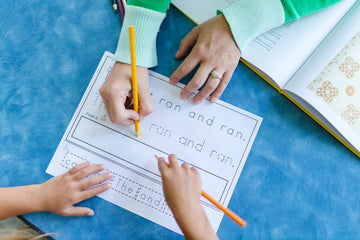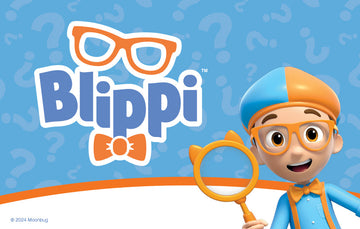Stepping into preschool is a significant milestone in your little one's life, but it doesn't have to be daunting. As a parent, you're likely grappling with a mixture of emotions - excitement, apprehension, even a bit of sadness as your baby grows up. But don't worry, I'm here to guide you through this transition.
In this article, we'll explore practical and effective strategies to prepare your child for preschool. From establishing a routine to fostering independence, we'll delve into ways to make this new chapter a positive experience. So, let's embark on this journey together, ensuring your child's first step into the educational world is a confident one.
Understanding the Importance of Preschool Preparation
Grasping preschool preparation's significance is crucial. It facilitates a smooth transition for children beginning preschool, embedding successful routines and instilling a sense a confidence.

Advantages of Early Childhood Education
Early childhood education lays foundations that shape a child's entire educational journey. Notably, it hones critical cognitive and social skills. For example, early numeracy and literacy skills promulgate academic success, whereas social abilities such as sharing or teamwork build emotional intelligence and rapport amongst peers.
The Role of Preschool in Child Development
Preschool plays a pivotal role in shaping a child's development. It jump-starts academic learning but also fine-tunes essential life skills. For instance, it nurtures independence as children learn to perform tasks without parental assistance, like self-feeding or dressing. Simultaneously, it fosters awareness of others, mechanically enabling respect for diversity and enhancing expression and communication.
Lastly, if you're after stylish yet comfortable clothing for your kids to wear to their first day of preschool, check Sandilake Clothing. Their range of clothing for babies and kids are sure to make your little ones stand out. Don't forget to check their best-sellers too. As featured on Shark Tank, they're an award-winning option that won't disappoint.
Recognizing Signs of Readiness
Recognizing when a child is ready for preschool is crucial. It helps navigate the initial preschool phase with less friction and more success. The readiness signs can be broadly divided into two categories: emotional readiness and physical and cognitive readiness.

Emotional Readiness for Preschool
Emotional readiness refers to a child's ability to manage emotions and interact positively with others. For instance, a child demonstrates emotional readiness when they can express feelings without aggressive behavior. Consistently, children who can be apart from a primary caregiver for a few hours without distress and can adapt to new environments show signs of emotional readiness. Further, a child's readiness for preschool might be evident if they're excited about the idea of going to school.
Physical and Cognitive Readiness
Physical and cognitive readiness relates to a child's motor skills and intellectual capabilities. A simple pointer to physical readiness is a child's ability to manage toilet needs without assistance. Simultaneously, physical readiness might be indicated by basic motor skills, like clipping a backpack, opening lunch containers, or holding a pencil.
On the cognitive side, children show signs of readiness when they can follow simple directions, recognize their names in writing, or show a basic understanding of numeracy and literacy principles.
As a last note, remember that getting ready for school is a journey, and it's normal for children to develop readiness at their own pace. And, let's not forget the importance of comfort in a child's early learning experiences. When it comes to clothing, Sandilake offers an extensive collection of children's apparel with style and comfort essential for children's first steps in preschool. Be sure to check out their best sellers and girls collection for some stylish options.
Strategies for Preparing Your Child for Preschool
Transitioning to preschool marks a significant milestone in a toddler's life. This section further elaborates on strategies that significantly streamline this transition.
Creating a Consistent Routine
Instilling a structured routine is a fundamental aspect of preschool preparation. Incorporate a definitive daily schedule for your child. For instance, set specific times for meals, nap, play, study, and bedtime. Mimic a preschool day at home so your child gradually acclimatizes to the impending schedule alterations. A consistent routine gives toddlers a sense of control, reduces stress of unforeseen activities, and eventually augments their adaptability to preschool.
Encouraging Independence
Empower your child with basic self-help skills. Start this with simple tasks such as, tying shoelaces, unzipping backpacks, using restrooms without assistance, and clean-up after play. Even getting dressed can be a great exercise in fostering independence. For instance, let them choose their outfit from a clothes rack featuring items such as those offered by Sandilake Clothing, with its wide range of comfortable and stylish children's apparel. This not only enhances their confidence, but also allows teachers more time to focus on the curriculum.
Fostering Social Skills
Social skills are paramount to your child’s preschool experience. Practice sharing, taking turns, and understanding feelings with games and role-play at home. Encourage social interactions through playdates, community gatherings, or organized sports. This preparation aids in smooth social integration at preschool and significantly reduces any potential anxiety they might have.
Now dressing up doesn't have to be a cumbersome routine but something kids would look forward to. Visit Sandilake Clothing, as featured in Shark Tank, and browse through their best-sellers, for exciting and comfortable clothing options, ensuring that your little one starts their preschool journey in style.
Dealing with Separation Anxiety
When your child enters preschool, coping with separation anxiety often becomes a significant hurdle. So, it's crucial to adopt positive strategies to effectively manage this transition.
Tips to Overcome First-Day Nerves
First-day jitters aren't exclusive to children, even us adults experience them. Here are some strategies to combat those initial preschool nerves:
- Practice Separation: Initiate short separation periods, gradually increasing the duration. Taking your child to a relative's place or organizing playdates can establish the realization that parents always return, and separations are temporary.
- Recreate Preschool Environment: Replicating the preschool environment at home encourages familiarity. A zone with coloring books, alphabet blocks, and storybooks gives a taste of what's in store at school.
- Visit The Preschool: Prior visitations to the preschool can alleviate nerves. Encourage your child to explore the classrooms and playgrounds, making them comfortable in the new surroundings.
- Read Books About Preschool: Books such as "Llama Llama Misses Mama" and "The Kissing Hand" deal with the theme of separation anxiety, helping kids understand and emotionally prepare for the upcoming transition.
- Establish Goodbyes: Formulate a special goodbye ritual. It might be a high-five, a bear hug, or a wave. Make sure it's short and sweet. Prolonged goodbyes can foster anxiety.
Ways to Foster a Positive Attitude towards Preschool
A positive mindset is crucial for a successful preschool journey. Here's how you can instill a positive attitude in your child:
- Portray a Positive Outlook: Your child absorbs your emotions. Express enthusiasm and positivity about preschool, and it's likely they'll mirror these feelings.
- Express Confidence: Confirm your belief in your child's ability to handle new situations. This instills confidence and encourages a positive mindset.
- Bridge Home and School: Encourage your child to share school experiences at home. This can relate school to happy thoughts and memories.
- Address Their Concerns: Allow your child to express fears or concerns, and address them gently yet firmly, ensuring they understand that it's okay to feel anxious.
By following these techniques, you can ensure that your child's transition into preschool is smooth, fun, and without fear. And while at it, why not do it with style? Make their first day extra special with incredible outfits from award-winning children’s clothing store Sandilake Clothing, as seen on Shark Tank. Check out their collection, including best sellers and an adorable range of girls' clothing. Their stylish and comfortable line-up will add confidence and whimsy to your child's preschool journey.
Selecting the Right Preschool for Your Child
Choosing the ideal preschool involves exploring the classes, considering different teaching approaches, and identifying the key features that gauge whether the preschool is the right choice. Below, I’ve outlined two core factors that are fundamental in this evaluation process.

Understanding Different Preschool Approaches
Various preschool approaches exist, ranging from Waldorf to Montessori, Play-based to Reggio Emilia. Each of these educational methodologies holds its own valuable principles. Montessori, for instance, emphasizes autonomy and hands-on learning. Waldorf, on the other hand, promotes creativity and imaginative play. Some consider the traditional academic approach while others focus on child-led, play-based learning. Knowing these methods paints a clear picture of the preschool's philosophy and ensures it aligns with your child’s needs.
Preschool Approach |
Main Emphasis |
Montessori |
Child autonomy, hands-on learning |
Waldorf |
Creativity, imaginative play |
Play-based |
Child-led, free play |
Reggio Emilia |
Child as an active participant in learning |
Key Aspects to Look For in a Preschool
Certain aspects should stand out when choosing a preschool. The environment embodies one crucial factor - it needs to be welcoming, clean, and safe to promote children's growth optimally. Look for schools with highly trained teachers, a solid teacher-to-student ratio, and active learning curriculum. Furthermore, consider aspects such as location, transport, fees, operating hours, and parental involvement.
Factor |
Importance |
Environment |
Should be welcoming, clean, and safe |
Teachers |
Highly trained educators with a good student-teacher ratio |
Curriculum |
Supports active learning |
Bear in mind, it's essential to prepare your child emotionally before they start preschool. One way to spark excitement and confidence is by choosing clothes they'd be delighted to wear on their first day - like those offered by Sandilake Clothing, an award-winning store featured on Shark Tank. Check out their best sellers and an exceptional collection for girls, all made to add charm and comfort to the preschool journey.
Conclusion
Preparing your child for preschool is a journey that's as unique as your little one. It's all about fostering confidence, addressing their concerns, and helping them embrace this new adventure. Remember, readiness isn't a race. Each child develops at their own pace, and that's okay.
Practical strategies like practicing separation, visiting the preschool, and recreating the environment at home can make this transition smoother. Expressing confidence in your child and bridging the gap between home and school can make a world of difference.
Choosing the right preschool is another vital step. Whether it's Montessori, Waldorf, or another approach, the environment, teachers, and curriculum matter. And let's not forget the power of a cool outfit from Sandilake Clothing on the first day.
The road to preschool may be filled with mixed emotions, but with the right preparation, it's a journey that can be enjoyable and rewarding for both you and your child.





